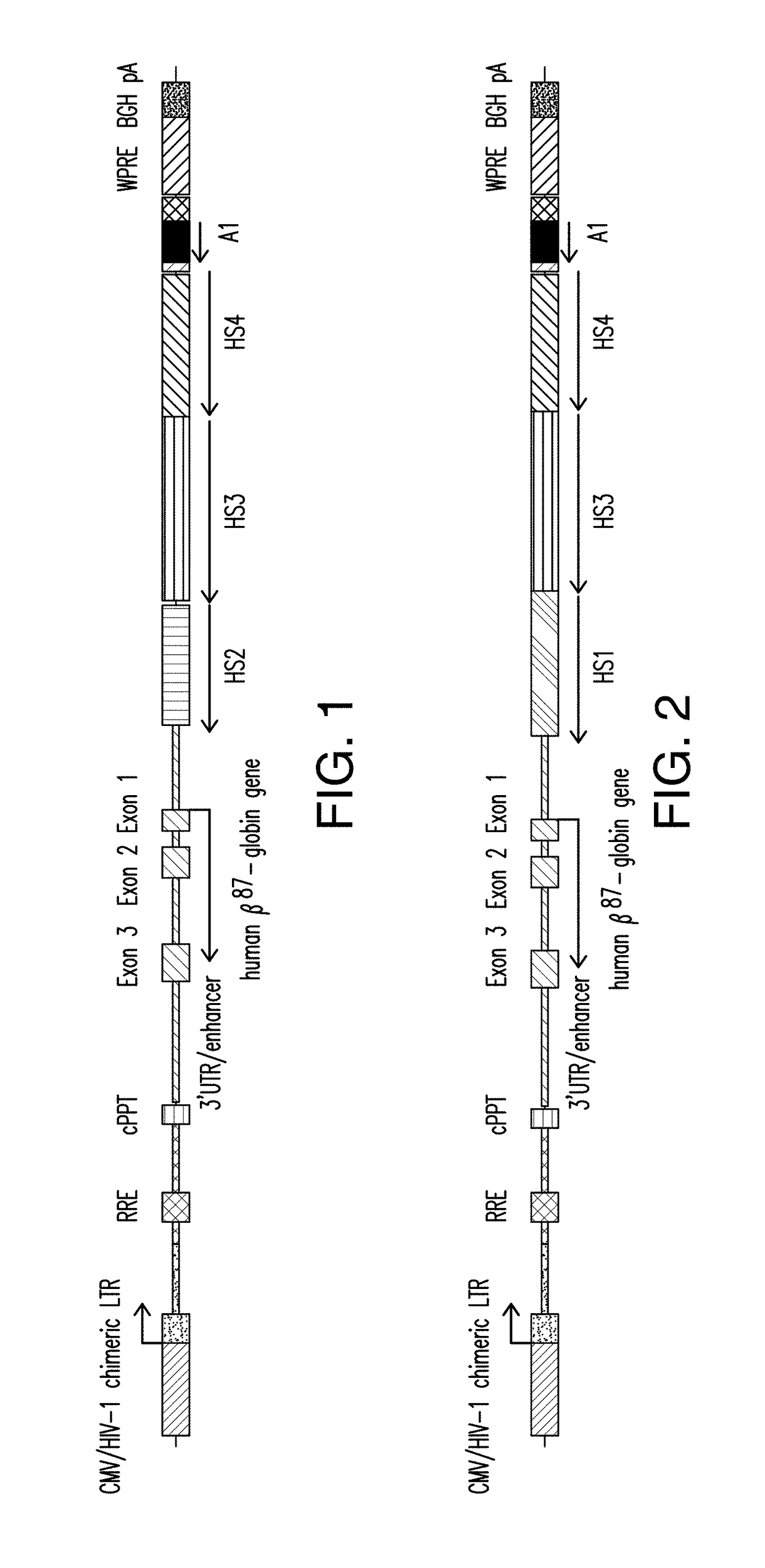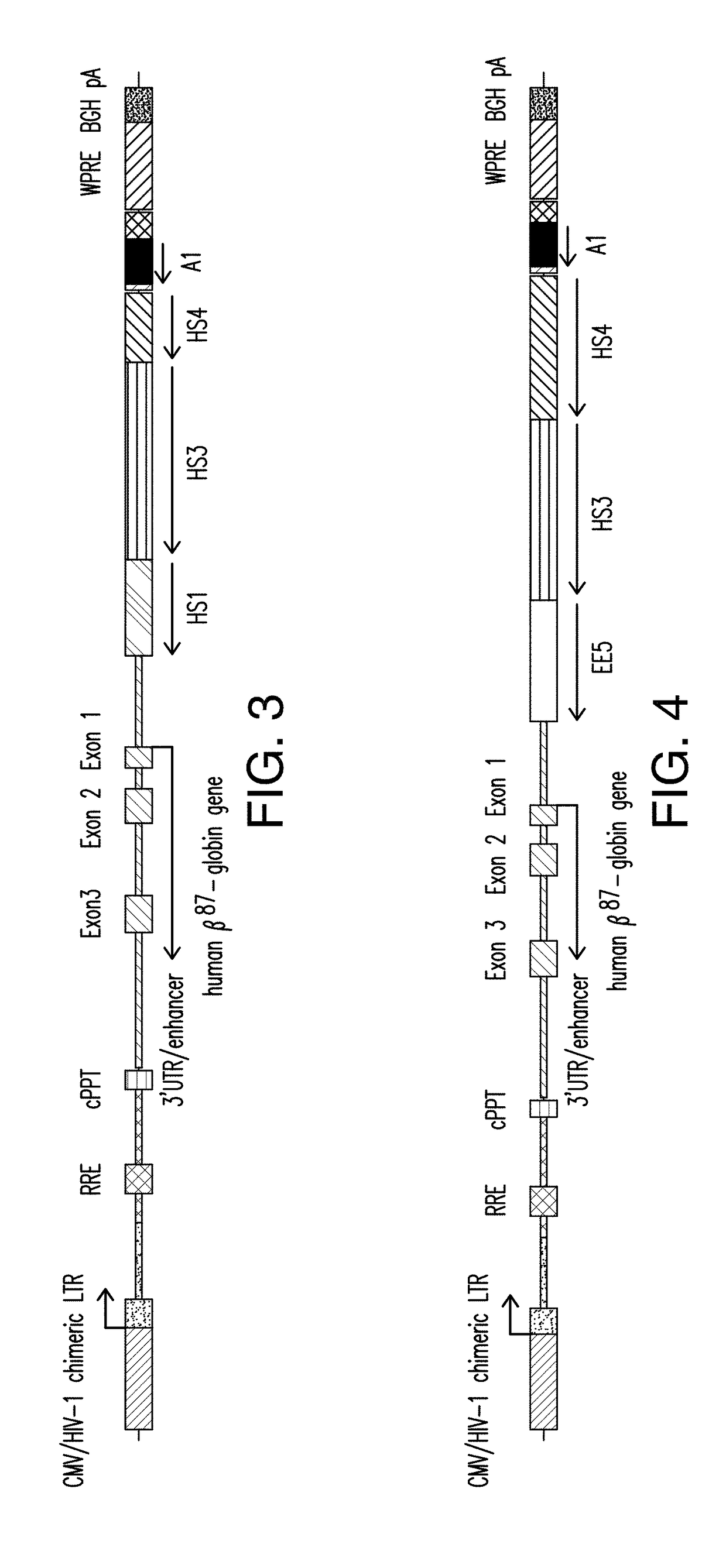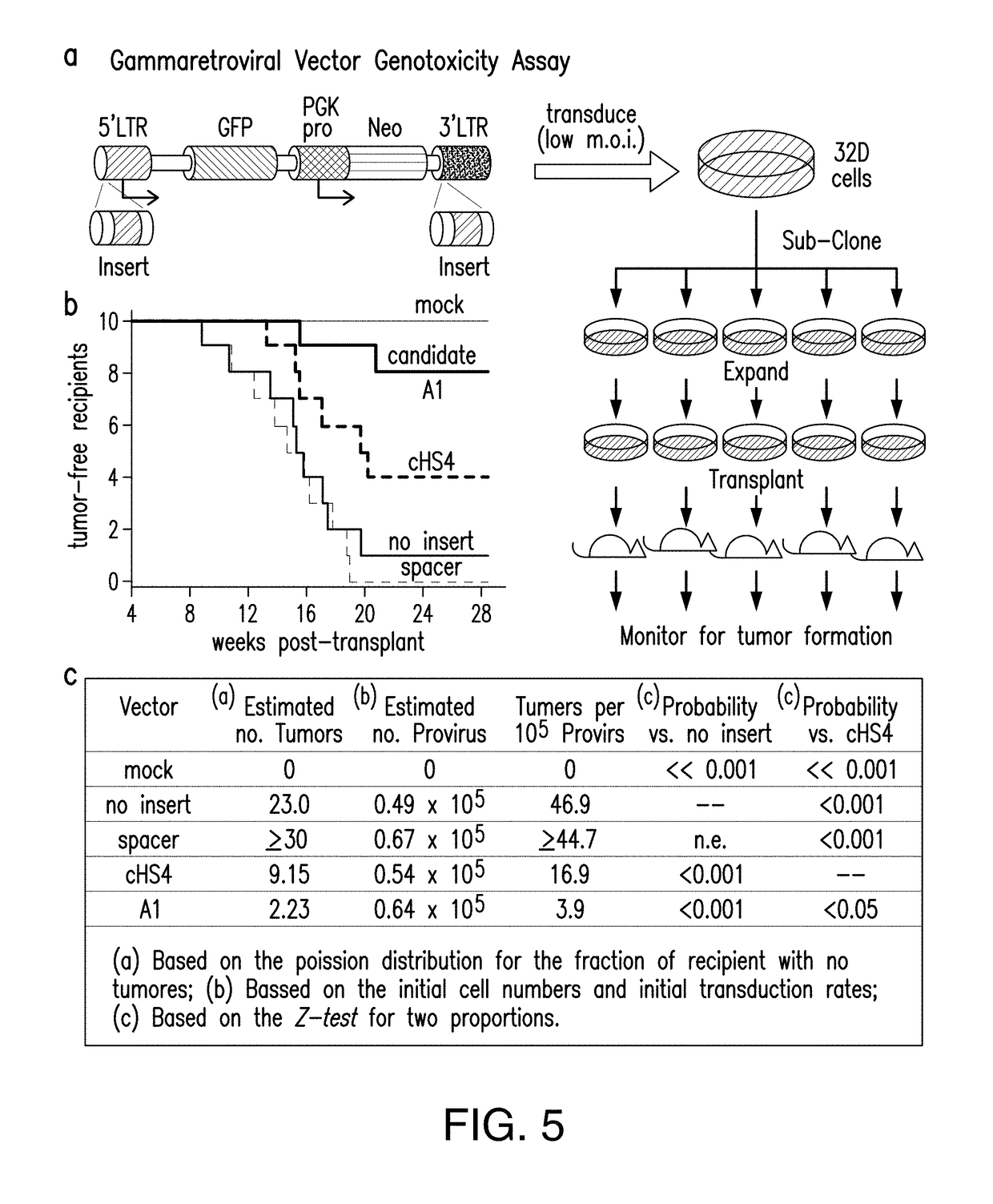Globin gene therapy for treating hemoglobinopathies
a technology of hemoglobinopathies and gene therapy, applied in the direction of drug composition, genetic material ingredients, extracellular fluid disorder, etc., can solve the problems of iron overload, sudden death, bmt, etc., and achieve the effect of improving the survival rate of patients with -thalassemia or sickle cell diseas
- Summary
- Abstract
- Description
- Claims
- Application Information
AI Technical Summary
Benefits of technology
Problems solved by technology
Method used
Image
Examples
example 1
Discovery of Novel Insulators
[0225]The problems created by insertional mutagenesis of viral vectors are widely known (Nienhuis (2013), Baum et al. (2006), Nienhuis et al. (2006)) as is the evidence that the risks of genotoxicity can be reduced by the use of chromatin insulators (Arumugam et al. (2007), Emery (2011), Evans-Galea et al. (2007), Rivella et al. (2000), Emery et al. (2000), Emery et al. (2002), Yannaki et al. (2002), Hino et al. (2004), Ramezani et al. (2003), Ramezani et al. (2008)). Approaches allowing the efficient identification of enhancer blocking insulators in the human genome have been developed. These new insulators are short, on the average 150 bp, and they do not affect adversely the titers of viral vectors and they are several times more powerful than the insulator cHS4. Genomic approaches were used to discover the most powerful enhancer blocker and barrier insulators of the human genome. For gene therapy of the hemoglobinopathies, powerful enhancers are requ...
example 2
Characterization of Globin Vectors Comprising at Least One Insulator
[0230]A presently disclosed expression cassette (designated as “Expression Cassette 1”; as shown in FIG. 1), which comprises insulator A1, and a human βA-globin gene encoding a threonine to glutamine mutation at codon 87 (βA-T87Q) operably linked to a β-globin LCR region comprising a HS2 region having the nucleotide sequence set forth in SEQ ID NO:9, a HS3 region having the nucleotide sequence set forth in SEQ ID NO:5, and a HS4 region having the nucleotide sequence set forth in SEQ ID NO:7, was generated. The rationale for using the variant β chain (βA) is to facilitate the detection of the vector-encoded β-globin gene, distinguishing it from endogenous or transfused beta chains. The glutamine (GLN) residue at position 87 in the γ-globin chain augments the anti-sickling activity of the gamma chain relative to the β chain, while preserving adult oxygen-binding characteristics of the β chain (Nagel et al. (1979)). In...
example 3
Evaluation of Enhancer Activity in Non-Erythroid K562 Cells
[0232]The enhancer activity of HS2 was evaluated in Non-erythroid K562 Cells. As shown in FIG. 7, GFP expression in K562 cells transduced with vectors driven by a minimal promoter linked to no enhancer (“Empty”, HS2, HS3-4, HS2-3-4 or the runx1 enhancer used as positive control (“RUNX1”). Background expression was on the order or 0.01% (“empty), but increased over 10-fold with HS2-3-4 (“Lcr9”, 0.17%). This enhancement was mostly due to HS2 (0.15%) but not HS3-4 (0.05%). All cell lines were comparably transduced (mean vector copy number 2.5). The results support that HS2 but not HS3-HS4 may pose an oncogenic risk in non-erythroid hematopoietic stem and progenitor cells.
PUM
| Property | Measurement | Unit |
|---|---|---|
| temperatures | aaaaa | aaaaa |
| temperatures | aaaaa | aaaaa |
| temperatures | aaaaa | aaaaa |
Abstract
Description
Claims
Application Information
 Login to View More
Login to View More - R&D
- Intellectual Property
- Life Sciences
- Materials
- Tech Scout
- Unparalleled Data Quality
- Higher Quality Content
- 60% Fewer Hallucinations
Browse by: Latest US Patents, China's latest patents, Technical Efficacy Thesaurus, Application Domain, Technology Topic, Popular Technical Reports.
© 2025 PatSnap. All rights reserved.Legal|Privacy policy|Modern Slavery Act Transparency Statement|Sitemap|About US| Contact US: help@patsnap.com



